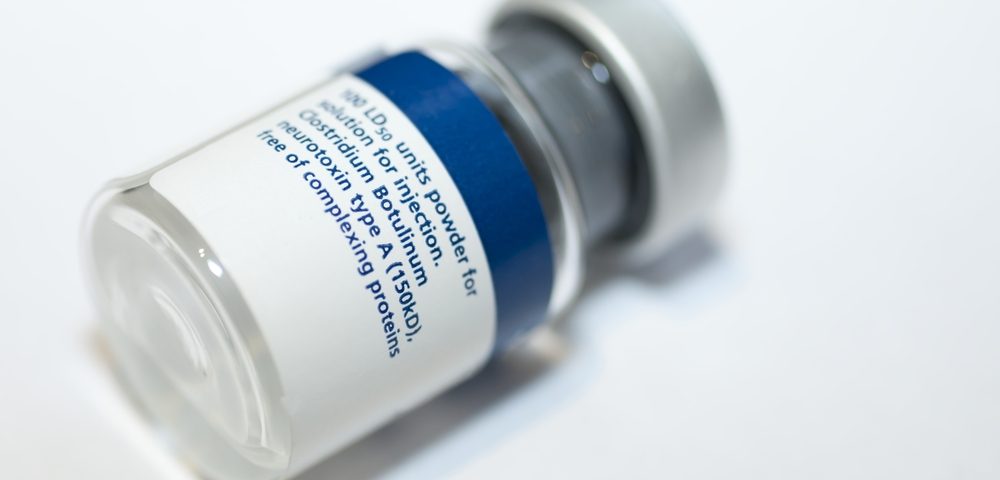Botox, also known as therapeutic onabotulinumtoxinA (BoNT-A), is increasingly being used to treat patients with lower urinary tract diseases (LUTDs) although its mechanisms of action are still unclear. Researchers at the Buddhist Tzu Chi General Hospital, in Taiwan, reviewed the pathophysiology of LUTDs and the ways through which BoNT-A acts on these patients.
The review study, “Botulinum Toxin A and Lower Urinary Tract Dysfunction: Pathophysiology and Mechanisms of Action,” was published in Toxins.
Patients with LUTD, a fairly common health condition in adults of both sexes, are known to have painful and frequent urination, and be troubled by incontinence. The condition is usually treated with oral medications, such as alpha-adrenergic blockers and anti-muscarinic agents, that help to relax muscles in the bladder. However, some patients are refractory to these agents and need other options. In men, benign prostate hyperplasia, or BPH, may be a consequence of LUTD.
BoNT-A, a potent neurotoxin produced by the bacterium Clostridium botulinum, inhibits the release of a specific neurotransmitter called acetylcholine, resulting in fewer muscle contractions. Due to these effects, BoNT-A has been widely used in a variety of neuromuscular and neuropathic diseases that are difficult to treat with conventional drugs.
BoNT-A injection is being used to treat people with LUTDs who fail to respond (are refractory) to conventional treatment. Large-scale clinical trials demonstrated BoNT-A’s efficacy in patients with urinary incontinence caused by detrusor (bladder muscle) overactivity — but only this one LUND subtype — and BoNT-A was approved by the U.S. Food and Drug Administration (FDA) for such use in 2013.
People with overactive bladders are troubled by a condition known as urgency, the sudden, compelling desire to pass urine. This can be caused by dysfunction or injury to the nerves, the detrusor muscle, or to the cell layer that lines the bladder surface (the urothelium). The cause of overactive bladder muscles can be classified as neurogenic (NDO) when patients have relevant neurologic conditions, or idiopathic (IDO) in patients with no known cause.
Because bladder contraction is mediated by the release of acetylcholine, BoNT-A injection has proven efficacious in reducing urgency and urgency incontinence. The studies revealed that BoNT-A works to not only block the release of acetylcholine, but also hampers the release of other neurotransmitters, such noradrenaline, reduces the muscarinic receptor in nerve cells, and blocks ATP (energy source) release in the urothelium.
Interestingly, BoNT-A seems to have anti-inflammatory effects on patients with interstitial cystitis/bladder pain syndrome, a LUTD subtype again characterized by urgency, frequent and painful urination, and by sterile urine. In these patients, BoNT-A was shown to reduce substance P, a neurotransmitter involved in inflammatory processes and pain, and nerve growth factor, as well as lower the number of activated inflammatory cells. It also reduced the levels of VEGF and induced apoptosis (cell death) in the bladder of these patients.
Although BoNT-A injection has been widely used to treat different LUTDs patients refractory to conventional treatment, it has only been proven effective in treating urinary incontinence due to overactive bladder muscles — whether IDO and NDO — in several large clinical trials.
Patients with hyperplasia of the prostate commonly have bladder obstruction, and several clinical trials suggest that BoNT-A injection may be beneficial for these men. In fact, BoNT-A may also inhibit prostate contraction and growth by preventing acetylcholine secretion. But patients in Phase 2 trial were seen to have a high placebo effect (reacting well to a non-treatment they believed to a treatment), suggesting that BoNT-A is not really effective in bladder obstruction.
This study also revealed that BoNT-A’s mechanism of action — how it works — involves a number of distinct pathways, including inhibiting neuromuscular junctions by impairing acetylcholine secretion and desensitizing sensory nerves, reducing abnormal neurogenic inflammation, and increasing apoptosis in the bladder.
Understanding its mechanisms of action may help clinicians in determining which patients are eligible to receive BoNT-A treatment.
But, the researchers concluded, “not all LUTDs refractory to conventional therapy, such as BPH … can benefit from BoNT-A treatment,” possibly because the underlying nature (pathophysiology) of these diseases themselves have also “not been completely elucidated.”

